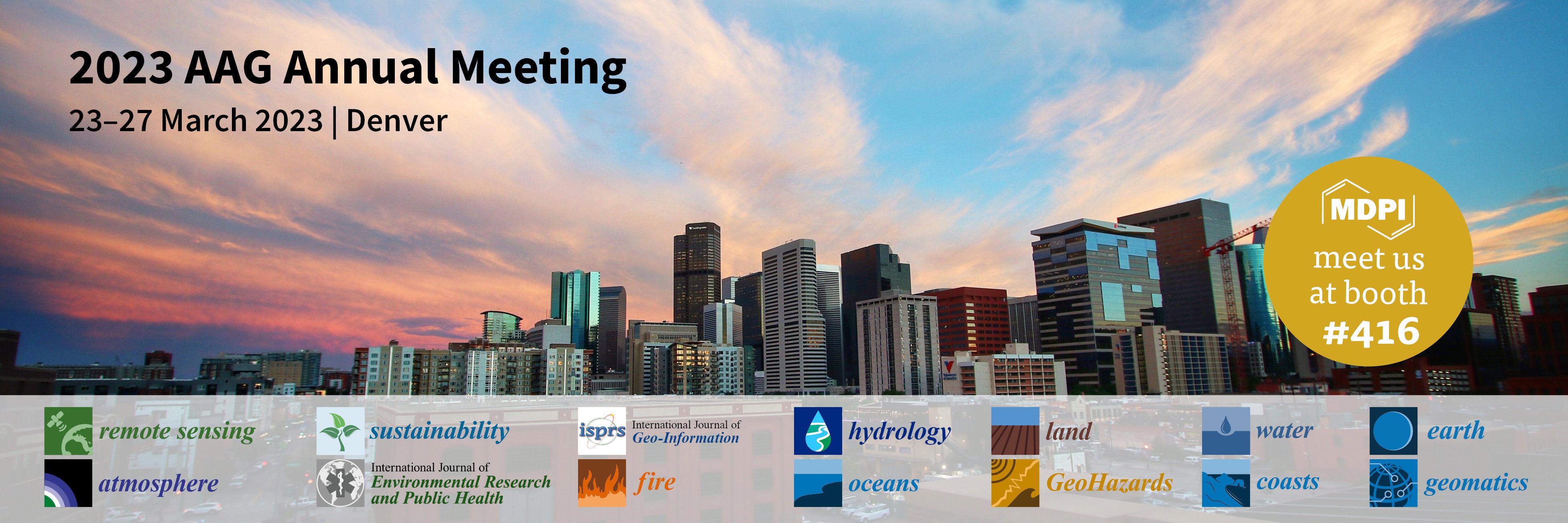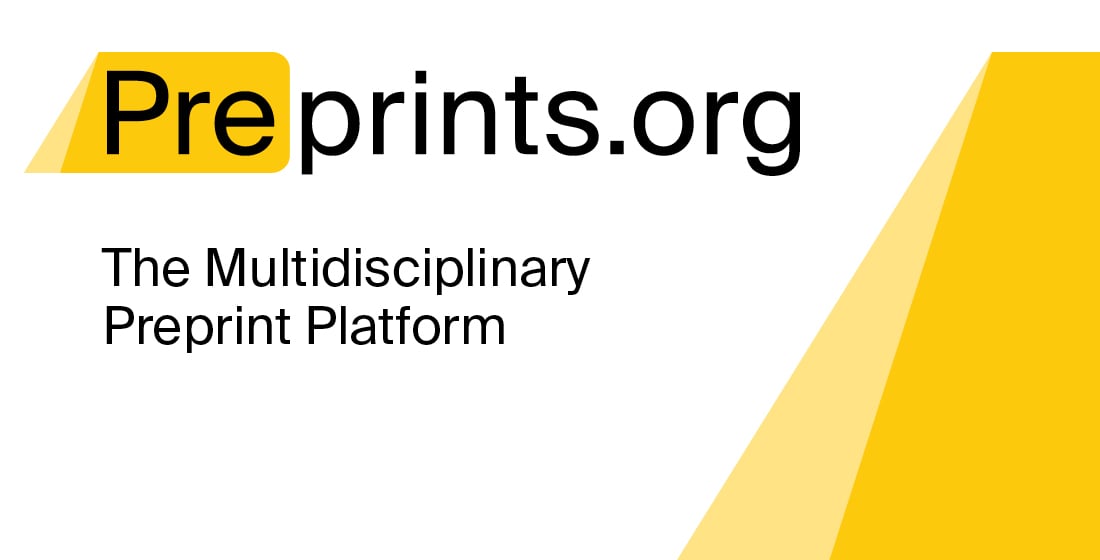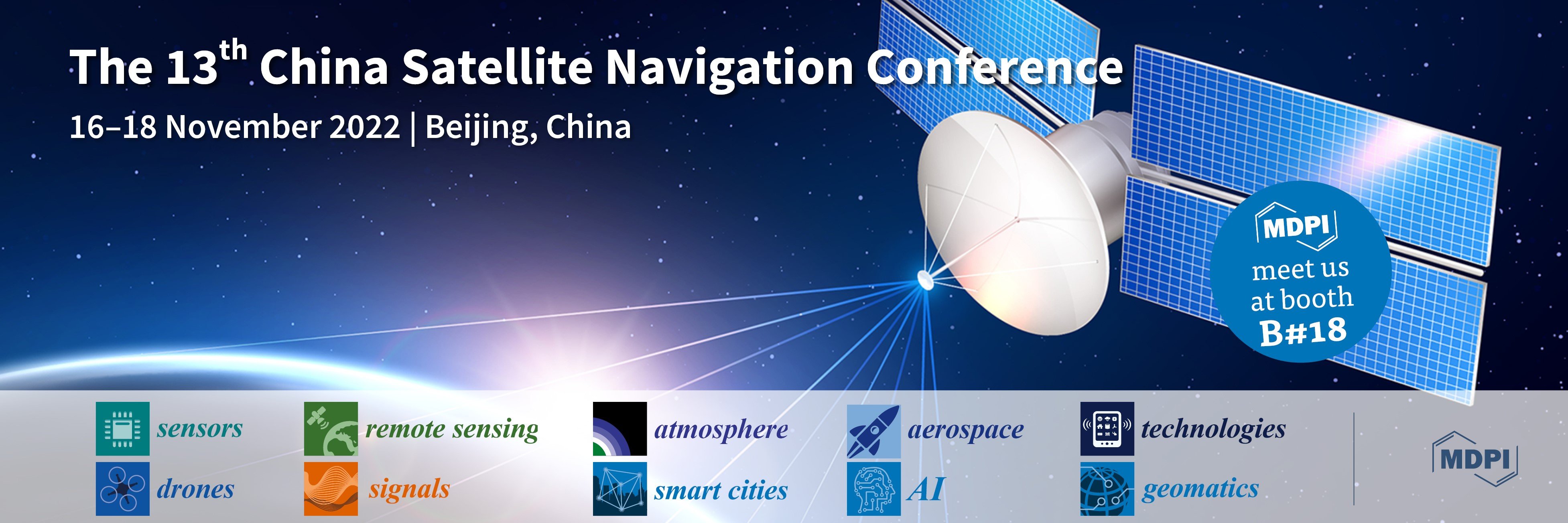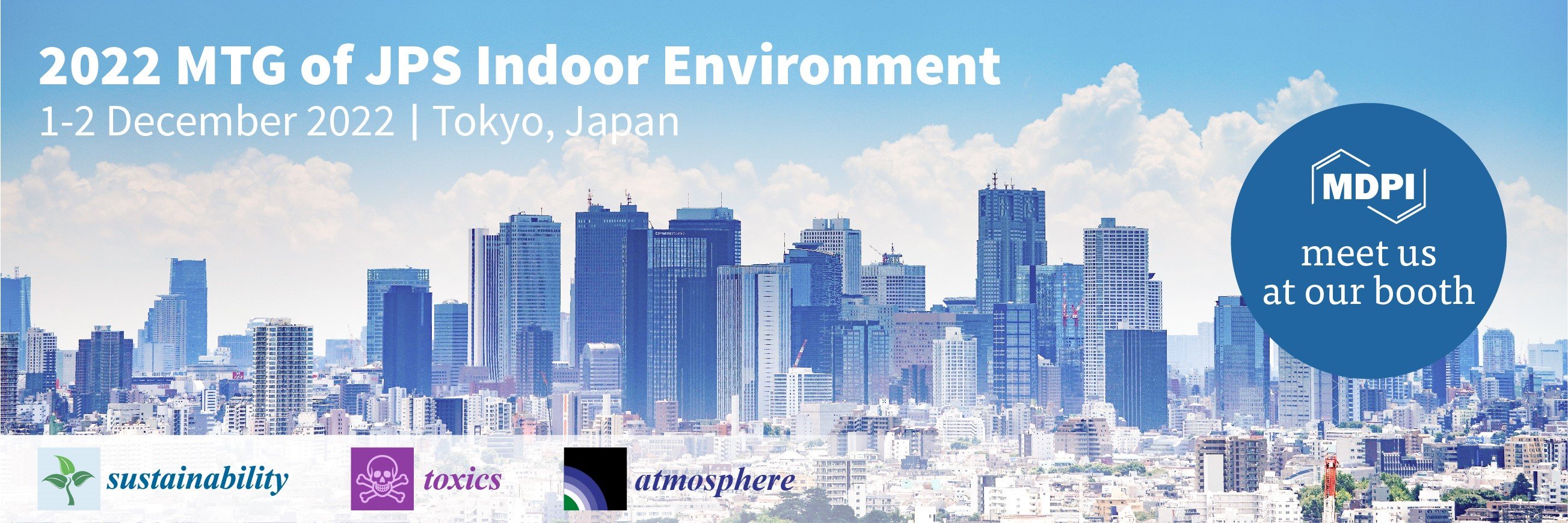
Journal Menu
► ▼ Journal Menu-
- Atmosphere Home
- Aims & Scope
- Editorial Board
- Reviewer Board
- Topical Advisory Panel
- Instructions for Authors
- Special Issues
- Topics
- Sections & Collections
- Article Processing Charge
- Indexing & Archiving
- Editor’s Choice Articles
- Most Cited & Viewed
- Journal Statistics
- Journal History
- Journal Awards
- Society Collaborations
- Editorial Office
Journal Browser
► ▼ Journal BrowserNeed Help?
Announcements
13 March 2023
MDPI’s Newly Launched Journals in December 2022
As a leading open access publisher, MDPI provides scholars with a high-quality and rich academic exchange platform by continuously expanding into new and exciting research areas.
In December 2022, MDPI launched five new journals, covering multiple subjects such as life sciences, biology, medicine and pharmacology, social sciences and humanities. These new journals are being edited by established scholars across the world.
|
Journal |
Founding Editor-in-Chief |
Journal Topics (Selected) |
|
Prof. Dr. Fabio Gresta, University of Messina, Italy| Editorial | view inaugural issue |
grass/forage/turf production; grassland management; pasture monitoring; grazing and livestock; grass agro-ecosystems| view journal scope | submit an article |
|
|
Prof. Dr. Christos G. Athanassiou, University of Thessaly, Greece| Editorial | view inaugural issue |
pesticides; fungicides; herbicides; fertilizers; soil conditioners| view journal scope | submit an article |
|
|
Prof. Dr. Stephen H. Safe, Texas A&M University, USA| Editorial | view inaugural issue |
receptor structure; receptor function; receptor signaling; receptor expression and regulation; receptor interactions with drugs| view journal scope | submit an article |
|
|
Dr. Jean Jacques Vanden Eynde, University of Mons-UMONS, Belgium| Editorial | view inaugural issue |
drug discovery; medicinal chemistry; preclinical and clinical research; marketed drugs; intellectual property and regulatory affairs| view journal scope | submit an article |
|
|
Prof. Dr. Heather Kanuka, University of Alberta, Canada| Editorial | view inaugural issue |
higher education; tertiary education; policy and practice in higher education; educational leadership in higher education; educational administration and management in higher education| view journal scope | submit an article |
If you are interested in creating more open access journals with us to publish cutting-edge research, please send your journal proposal application to newjournal-committee@mdpi.com.
7 March 2023
Displaying Co-Authors’ Email Addresses on the Webpage of Published Papers
MDPI is pleased to announce that we now display the co-authors’ email addresses in addition to the corresponding author’s email address on the webpage of published papers, protected by Captcha. For more information about this change, please visit the journal’s instructions for authors page.
We believe this change will facilitate academic discussions and advance our cause of open science and research. The corresponding authors are responsible for communicating with their co-authors and indicating in our system (https://susy.mdpi.com/) if co-authors would prefer for their email addresses not to be displayed.
22 February 2023
Meet Us at the 2023 AAG Annual Meeting, 23–27 March 2023, Denver, USA

Conference: 2023 AAG Annual Meeting
Date: 23–27 April 2023
Location: Denver, USA
MDPI will be attending the 2023 AAG Annual Meeting as an exhibitor, and we welcome researchers from different backgrounds to visit and share their latest ideas with us.
This conference is organized by the American Association of Geographers (AAG). The theme of the meeting is “Toward More Just Geographies”. At the meeting, specialists will share and discuss the latest in research and applications in geography, sustainability, and GIScience.
The following MDPI journals will be represented:
- Remote Sensing (leading journal);
- Sustainability (leading journal);
- IJGI;
- Hydrology;
- Land;
- Water;
- Earth;
- Atmosphere;
- IJERPH;
- Fire;
- Oceans;
- GeoHazards;
- Coasts;
- Geomatics.
Remote Sensing (ISSN: 2072-4292, IF: 5.349) publishes regular research papers, reviews, technical notes and communications covering all aspects of remote sensing science, from sensor design and validation/calibration to its application in geosciences, environmental sciences, ecology, and civil engineering. The aim is to publish novel/improved methods/approaches and/or algorithms of remote sensing to benefit the community, open to everyone in need of them.
Sustainability (ISSN: 2071-1050, IF: 3.889) encourages experts to publish their experimental, computational and theoretical research on sustainability. This encompasses topics related to social sciences, natural and applied science and engineering, in order to enable the application and development of sustainability.
If you are planning to attend this conference, please do not hesitate to start an online conversation with us. Our delegates look forward to meeting you in person and answering any questions that you may have. For more information about the conference, please visit the following website: https://www.aag.org/events/aag2023/.
16 February 2023
Increasing Visibility for Preprints.org – Clarivate adds the Preprint Citation Index to the Web of Science

On 9 February 2023, Clarivate, a global leader in providing trusted insights and analytics, added the Preprint Citation Index to the Web of Science platform, streamlining the research process by allowing researchers to locate and link to preprints alongside other trusted content in the database.
The Preprint Citation Index will act as a bridge to connect cutting-edge preprints with peer-reviewed journal articles published within the Web of Science Core Collection. Alerts can be easily set to monitor new research across several repositories and authors will also be able to include preprints on their Web of Science Research Profile to more accurately display their various research outputs.
As of its launch, the Preprint Citation Index will provide nearly two million preprints from various repositories, including MDPI’s own Preprints.org.
MDPI's Preprints Platform – Preprints.org
To advance Open Science and the fast dissemination of research, MDPI offers researchers a free multidisciplinary preprint platform. Preprints.org accepts submissions from all research areas and offers authors high visibility, permanent archiving, article-level Metrics and immediately citable content by assigning a Digital Object Identifier (DOI) to all preprints.
During submission to any MDPI journal, authors have the option to share their research as a preprint. After an initial screening, the manuscript is available online in 48 hours or less. Once online, preprints can be downloaded, shared, commented on, and cited, providing authors maximum visibility.
We invite you to join the ranks of the over 100k researchers using Preprints.org and share your research.
For more information, please visit Preprints.org.
22 December 2022
Special Issue Mentor Program
We are pleased to announce the launch of a new initiative—the MDPI Special Issue Mentor Program.
This program will enable early career researchers (who must hold a Ph.D. in a related field) to experience editing a Special Issue in MDPI journals, under the mentorship of our experienced Editorial Board Members or other experienced scientists. The mentor program will provide an excellent opportunity for early career scientists to gain editorial experience, and to cultivate their ability to edit scientific research.
The mentee’s responsibilities include:
- Proposing a Special Issue title and assisting the mentor in preparing a summary (around 200–400 words) and 3–10 keywords describing the background, importance, and goal of the Issue;
- Writing a brief promotion plan for the Special Issue;
- Preparing a list of scholars who may be interested in the Issue and personally e-mailing invitations on behalf of Guest Editors;
- Writing an editorial for the online Special Issue together with the mentor.
The mentor’s responsibilities include:
- Conducting a final check before the Special Issue is published online;
- Performing editorial control of the Special Issue and quality control of the publications, both of which must be carried out in a timely manner;
- Providing suggestions to younger scholars if they have any doubts or concerns regarding submissions;
- Organizing video calls with young scholars and the Editorial Office regularly to discuss problems and improvement suggestions for the Special Issue;
- Making and submitting decisions regarding submissions with the assistance of mentees.
Certificates and awards:
After the Special Issue closes, the Editorial Office will provide official certificates for all the mentors and early career researchers.
If you are interested in this opportunity, please send your Special Issue proposal to the Editorial Office of a journal you choose, and we will discuss the process (i.e., mentor collaboration, Special Issue topic feasibility analysis, etc.) in further detail. The full list of MDPI journals is as follows: https://www.mdpi.com/about/journals.
In addition to the new Special Issue Mentor Program, we will continue to welcome all Special Issue proposals focusing on hot research topics.
14 December 2022
"Thanks a Million!" – One Million Articles Published in MDPI Journals
MDPI has just become the first open access (OA) publisher to reach the milestone of one million articles published. That is one million articles freely available to all, to circulate and build upon! We are proud to share this special moment with the global scientific community.
This landmark has been reached thanks to the immeasurable support of more than 600,000 expert reviewers, 66,000 editorial board members and 6700 hard-working colleagues across MDPI’s global offices.
Within more than 25 years of publishing, our journals received 2.1 million manuscripts and generated 4.6 million peer review reports to get to one million papers published.
Reaching the milestone of one million articles published reinforces our mission to remove any existing barriers and to make scientific research accessible to all. Since its inception, MDPI’s goal has been to create reliable processes to make science open. This is a path towards facilitating the dissemination of novel insights in scientific communities.
Regular feedback from authors and reviewers shows that our service is greatly appreciated and needed. At the same time, the feedback helps us identify areas for further improvement.
As it stands, a significant share of published research findings remain closed access. More than half of the content published with the most well-known legacy publishers stays behind a paywall, and that is not including articles published in hybrid OA journals, or made available months or years after publication.
A new policy announced by the US administration in August 2022 requires that, as of January 2026, all US federally funded research be made freely and immediately available after publication. While the new policy does not mandate articles be published under an open access license, it is aligned with the open access movement in removing all barriers to research. Similarly, some of the most advanced research institutions in the world intend to have all funded research articles published in open access by 2025.
MDPI is proud to be the leading agent of the transition to open access.
"Thanks a Million" to all the contributors!
8 December 2022
MDPI Sustainability Foundation: New Look and Nominations for the 2023 Sustainability Awards Now Open

We are pleased to announce that the website of the MDPI Sustainability Foundation has been revamped! For the past couple of months, our UX UI team and front-end developers have been working hard to launch the website in time for the opening of the Sustainability Awards nominations.
The website is not the only thing that has had a remodeling. Indeed, the format of the Emerging Sustainability Leader Award (ESLA) has been updated. ESLA is now a competition open to individual researchers or start-ups founded by researchers under the age of 35. Nominee applications will go through 2 rounds of selection until the final 3 are decided. The finalists will then be invited to give pitch presentations during the Award Ceremony to win either first place (10,000 USD) or runner-up (2 x 5000 USD).
The World Sustainability Award, on the other hand, remains the same: a total prize money of 100,000 USD is up for grabs by senior individual researchers or groups of researchers from the international research community.
Nominations for both the World Sustainability Award and the Emerging Sustainability Leader award are now open! Check out our new website for more information on how to nominate.
16 November 2022
Editorial Board Members from Atmosphere Featured in Stanford’s List of the World’s Top 2% Scientists
Stanford University has recently published an update of the list of the top 2% most widely cited scientists—the World’s Top 2% Scientists.
The time node of the statistical data of this list is from 1960 to 2022, and it is divided into two lists: "Lifetime Scientific Influence Ranking" and "2022 Annual Scientific Influence Ranking". The "Lifetime Scientific Influence Ranking" counts the comprehensive influence performance of scientists during their careers, and the "2022 Annual Influence Ranking" focuses on highlighting the academic influence of scientists in the previous year. This ranking, considered the most prestigious worldwide, is based on the bibliometric information contained in the Scopus database and includes more than 200,000 researchers from the more than 10 million scientists considered to be active worldwide, with 22 scientific fields and 176 subfields taken into account.
We are pleased to share that 79 Editorial Board Members from MDPI’s journal Atmosphere (ISSN: 2073-4433) were featured in Stanford University World’s Top 2% Scientists list in 2022.
|
Name |
Affiliation |
|
Prof. Dr. Chuanfeng Zhao |
Beijing Normal University, China |
|
Dr. Gareth Marshall |
British Antarctic Survey, UK |
|
Prof. Dr. Xuejun Liu |
China Agricultural University, China |
|
Prof. Dr. Shaofei Kong |
China University of Geosciences, China |
|
Prof. Dr. Xiaodong Liu |
Chinese Academy of Sciences, China |
|
Prof. Dr. Yuepeng Pan |
Chinese Academy of Sciences, China |
|
Dr. Guiqian Tang |
Chinese Academy of Sciences, China |
|
Prof. Dr. Xuexi Tie |
Chinese Academy of Sciences, China |
|
Prof. Dr. Tao Wang |
Chinese Academy of Sciences, China |
|
Prof. Dr. Lin Wang |
Chinese Academy of Sciences, China |
|
Prof. Dr. Kimitaka Kawamura |
Chubu University, Japan |
|
Dr. Merhala Thurai |
Colorado State University, USA |
|
Prof. Dr. Hans Moosmüller |
Desert Research Institute, USA |
|
Prof. Dr. Andreas Matzarakis |
Deutscher Wetterdienst, Germany |
|
Dr. Ismail Gultepe |
Environment Canada, Canada |
|
Prof. Dr. Martin Wild |
ETH Zurich, Switzerland |
|
Prof. Dr. Jianmin Chen |
Fudan University, China |
|
Prof. Dr. Liwu Zhang |
Fudan University, China |
|
Prof. Dr. Rohinton Emmanuel |
Glasgow Caledonian University, UK |
|
Dr. Kumar Vikrant |
Hanyang University, South Korea |
|
Prof. Dr. Hans von Storch |
Helmholtz-Zentrum Hereon GmbH, Germany |
|
Prof. Dr. Matti Leppäranta |
Helsingin Yliopisto, Finland |
|
Prof. Dr. Hai Guo |
Hong Kong Polytechnic University, China |
|
Prof. Dr. Tao Wang |
Hong Kong Polytechnic University, China |
|
Dr. Sandro Fuzzi |
Institute of Atmospheric Sciences and Climate, Bologna, Italy |
|
Prof. Dr. Jaroslaw Krzywanski |
Jan Dlugosz University in Czestochowa, Poland |
|
Prof. Dr. Akinori Ito |
Japan Agency for Marine-Earth Science and Technology, Japan |
|
Prof. Dr. Min Shao |
Jinan University, China |
|
Dr. Hossein Tabari |
KU Leuven, Belgium |
|
Prof. Dr. Jianping Huang |
Lanzhou University, China |
|
Prof. Dr. Petr Chylek |
Los Alamos National Laboratory, USA |
|
Dr. Yuichi Otsuka |
Nagoya University, Iapan |
|
Prof. Dr. Guoyi Zhou |
Nanjing University of Information Science & Technology, China |
|
Prof. Dr. Huijun Wang |
Nanjing University of Information Science & Technology, China |
|
Dr. Jimy Dudhia |
National Center for Atmospheric Research, USA |
|
Prof. Dr. Nikos Mihalopoulos |
National Observatory of Athens, Greece |
|
Dr. Patricia K. Quinn |
National Oceanic and Atmospheric Administration, USA |
|
Dr. Daniele Contini |
National Research Council, Italy |
|
Prof. Dr. Rajasekhar Balasubramanian |
National University of Singapore, Singapore |
|
Prof. Dr. Yu Song |
Peking University, China |
|
Dr. Alexander Smirnov |
Science Systems and Applications, Inc., USA |
|
Prof. Dr. Ognjen Bonacci |
Split University, Croatia |
|
Dr. Jiping Liu |
State University of New York Albany, USA |
|
Prof. Dr. Farhad Rachidi |
Swiss Federal Institute of Technology (EPFL), Switzerland |
|
Prof. Dr. Jose A. Acosta |
Technical University of Cartagena, Spain |
|
Dr. David Broday |
Technion - Israel Institute of Technology, Israel |
|
Prof. Dr. Pinhas Alpert |
Tel Aviv University, Israel |
|
Prof. Dr. Vijay P. Singh |
Texas A&M University, USA |
|
Prof. Dr. Masashi Hayakawa |
The University of Electro-Communications, Japan |
|
Prof. Dr. William R. Stockwell |
The University of Texas at El Paso, USA |
|
Dr. Jihui Yuan |
Toyohashi University of Technology, Japan |
|
Prof. Dr. Lei Duan |
Tsinghua University, China |
|
Dr. Qiang Song |
Tsinghua University, China |
|
Dr. Jia Xing |
Tsinghua University, China |
|
Dr. Hanbo Yang |
Tsinghua University, China |
|
Dr. Jonathan Pleim |
United States Environmental Protection Agency, USA |
|
Prof. Dr. Carla Viegas |
Universidade Nova de Lisboa, Portugal |
|
Dr. Hiroyuki Murakami |
University Corporation for Atmospheric Research, USA |
|
Prof. Dr. Ruprecht Jaenicke |
University Mainz, Germany |
|
Prof. Dr. John Walsh |
University of Alaska Fairbanks, USA |
|
Prof. Dr. Magda Claeys |
University of Antwerp, Belgium |
|
Dr. Célia Alves |
University of Aveiro, Portugal |
|
Dr. Georgios Karavalakis |
University of California, Riverside, USA |
|
Dr. Michael H. Glantz |
University of Colorado Boulder, USA |
|
Dr. Annick Pouquet |
University of Colorado Boulder, USA |
|
Prof. Dr. Maria Kanakidou |
University of Crete, Greece |
|
Prof. Dr. Edward Hanna |
University of Lincoln, UK |
|
Prof. Dr. Nicola Scafetta |
University of Naples Federico II, Italy |
|
Prof. Dr. Gennaro D'Amato |
University of Naples, Italy |
|
Prof. Dr. Ferdinando Salata |
University of Rome “Sapienza”, Italy |
|
Prof. Dr. Paulo Artaxo |
University of Sao Paulo, Brazil |
|
Prof. Dr. Sean Semple |
University of Stirling, UK |
|
Prof. Dr. Prashant Kumar |
University of Surrey, UK |
|
Dr. Luis Gimeno |
University of Vigo, Spain |
|
Prof. Dr. Vernon Cooray |
Uppsala University, Sweden |
|
Prof. Dr. Marc L. Mansfield |
Utah State University, USA |
|
Prof. Dr. Xiuxiang Chu |
Zhejiang Agriculture and Forestry University, China |
|
Prof. Dr. Weijun Li |
Zhejiang University, China |
|
Prof. Dr. Shaocai Yu |
Zhejiang University, China |
The latest Stanford rankings reflect the significant influence and research excellence of the scientists, who are committed to furthering their knowledge for the benefit of the world.
We would like to congratulate our Editorial Board Members on their excellent achievement and thank them for their immense contribution to the scientific progression and development of Atmosphere.
8 November 2022
Meet Us at the 13th China Satellite Navigation Conference, 16–18 November 2022, Beijing, China

Conference: The 13th China Satellite Navigation Conference
Date: 16–18 November 2022
Place: Beijing, China
Sensors (ISSN: 1424-8220) will be attending the 13th China Satellite Navigation Conference as an exhibitor. This meeting will take place from 16 to 18 November in Beijing, China.
The China Satellite Navigation Conference (CSNC) is an open academic exchange platform. It aims to strengthen academic innovation and promote the cooperation and exchange of satellite navigation systems, strengthen technological innovation and promote the engineering construction of satellite navigation systems, strengthen theoretical innovation and promote the progress of satellite navigation theories, and strengthen application innovation and promote the scientific development of satellite navigation industry. The conference has been successfully held for 12 years and has produced a large number of excellent results in academic, technical, theoretical, application, and talent aspects.
The following MDPI journals will be represented:
- Sensors;
- Remote Sensing;
- Atmosphere;
- Aerospace;
- Technologies;
- Drones;
- Signals;
- Smart Cities;
- AI;
- Geomatics.
If you are planning to attend this conference, please do not hesitate to start an online conversation with us (booth #B18). Our delegates look forward to meeting you in person and answering any questions that you may have. For more information about the conference and virtual booth, please visit the following website: https://www.beidou.org/annualmeeting.html.
4 November 2022
Meet Us at the 2022 MTG of JPS Indoor Environment, 1–2 December 2022, Tokyo, Japan

MDPI will be attending the 2022 MTG of JPS Indoor Environment, held in Tokyo, Japan, from 1 to 2 December 2022. The theme of this year’s conference is the preservation of human health and the maintenance of comfortable environments. Throughout the conference, prominent researchers and government officials will give keynote speeches on pressing issues of indoor environment. The 2022 MTG of JPS Indoor Environment provides an excellent opportunity for participants from industry and academia to keep up to date with the latest trends in indoor environmental problems.
During this conference, MDPI will welcome researchers from different backgrounds to visit and share their latest views and research with us.
The following MDPI journals will be represented:
If you plan on attending this conference, feel free to stop by our booth. Our delegates look forward to meeting you in person to answer any questions that you may have.
For more information about the conference, please see the following link: https://confit.atlas.jp/guide/event/siej2022/static/message.



